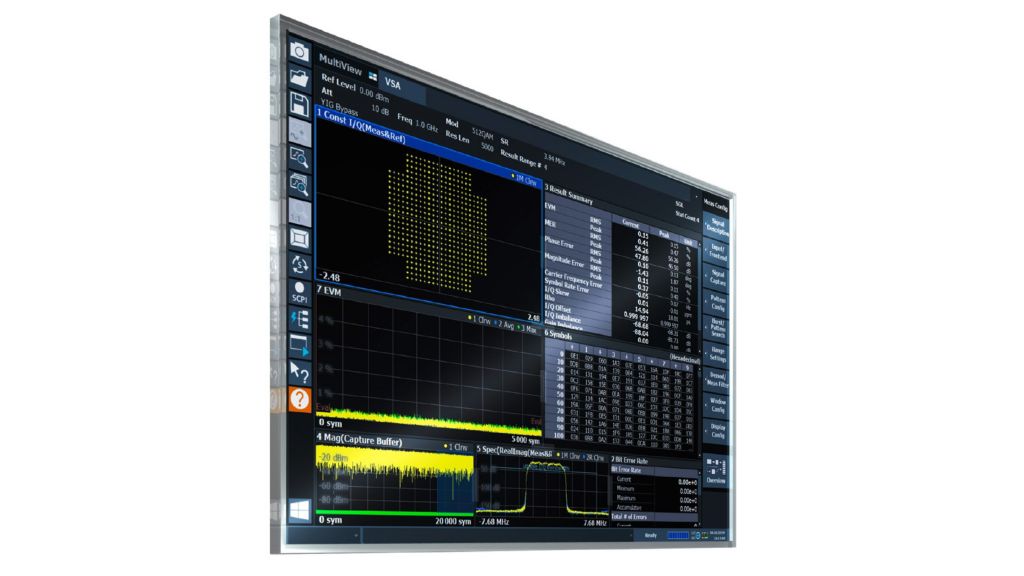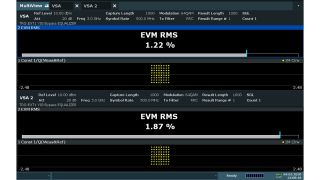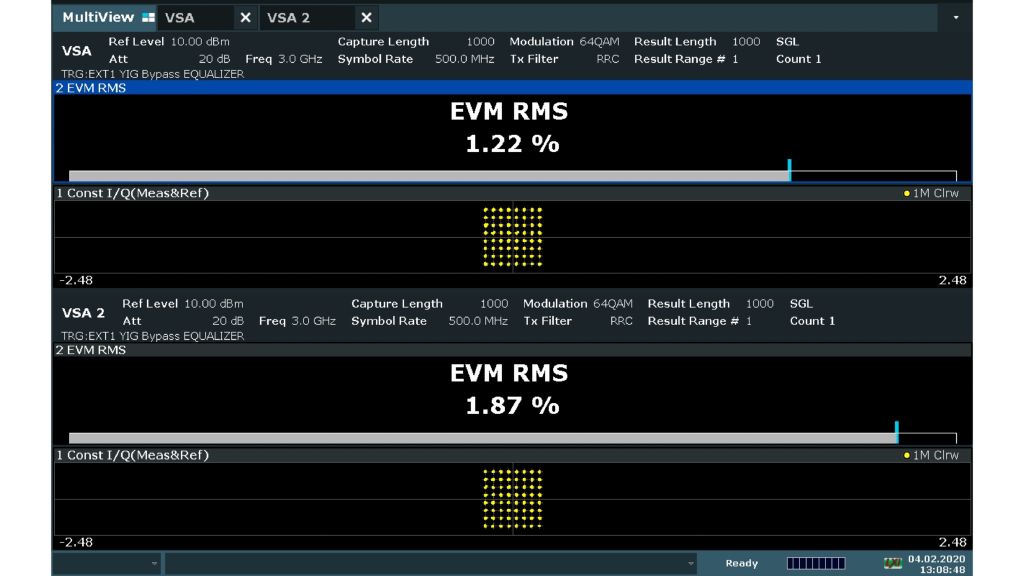Do you know your EVM?
The measurement of error vector magnitude (EVM) is relative – but what is the reference?

The measurement of error vector magnitude (EVM) is relative – but what is the reference?


EVM measurements are common. If you are a test engineer working with your given set of equipment, you might not even think about the comparability of EVMs. However, if your job includes comparing EVM results from different sets of equipment, you will surely care about repeatability of EVMs across test setups. Unlike MER for example, which per definition is normalized to the mean power of the reference signal, EVM normalization is not predefined.


The equation (right side) clearly shows EVM as the square root of the error power over a reference power.
While there is generally no confusion about the error power, there are two popular versions of the reference power that can make a significant difference in the EVM reading.
In many cases, the EVM references the mean (RMS) power of the reference (ideal) signal. Some applications also use the peak power of the reference signal as the reference power. Obviously, there is no right or wrong here. It is more a question of your measurement task and the expected results.
Most generic Rohde & Schwarz measurement personalities provide users with a choice of reference powers. The (often unchanged) default setting is the RMS power.
So why does it make a difference at all?
Imagine a QPSK signal. Looking at only the symbol instants (where EVM is typically evaluated), there is no difference between RMS and peak power – since all symbols have the same amplitude.
For a 64QAM signal, it can make a significant difference – up to 3.7 dB. APSK or higher order QAM modulations may result in even greater differences. Looking at the screenshot, we can see an EVM of 1.22 % (or –38.3 dB) and an EVM of 1.87 % (or –34.6 dB) measured on the exactly same data. In the first measurement, the EVM is normalized to the peak power of the 64QAM constellation. The second EVM is for an RMS normalized measurement. The ratio of the values corresponds to exactly 3.7 dB.
The decision to use peak or RMS normalization depends on the application – but comparisons should only compare apples to apples.



